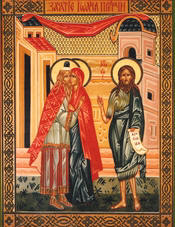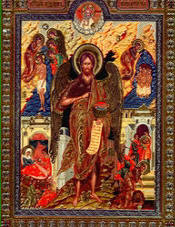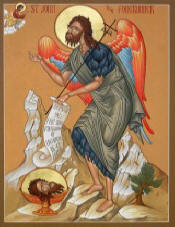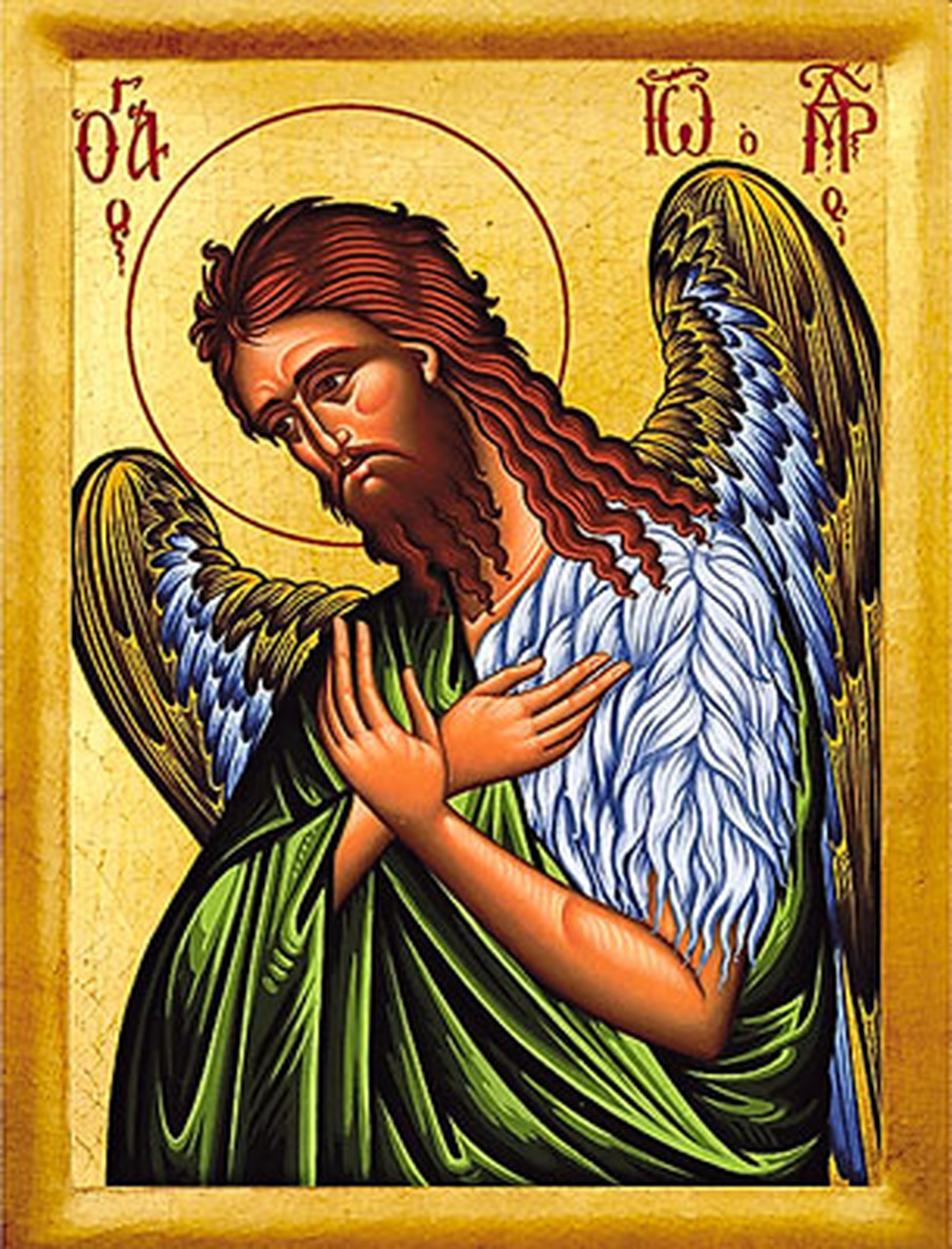St. John's Bio
John the Baptist was the precursor of Jesus Christ. A very well-known
preacher, he urged the people to get ready for the coming of Christ. He
asked people to repent for their sins and baptized those who repented in
preparation for the Lord to come.
Childhood:
According to the Gospel of Luke, the birth of John was prophesied
to his father Zachariah, by the angel Gabriel, while the former was
performing his functions as a priest, in the temple of Jerusalem (Luke
1:1-23). Since Zachariah was a priest of the course of Abijah and his wife
Elizabeth was one of the daughters of Aaron, John became a descendant of
Aaron from both his paternal and maternal side. The Gospel recounts that the
Theotokos came to inform Elizabeth about her pregnancy. At that time,
Elizabeth was in her sixth month of pregnancy and her unborn baby 'jumped
for joy' in the womb only. It was during her visit to Elizabeth that Mary
was first called the Mother of God (Luke 1:43). Ministry It is
said that, at the age of thirty, John started to preach on the banks of the
river Jordan. He preached against the evils of the time and attracted men to
penance and baptism. His only message to people was to repent, as the Lord
was coming. He baptized many people and, thus, was named John the Baptist.
According to the Holy Scriptures, Christ also turned to John to attain
baptism.The incident took place when John the Baptist's ministry was at its
close. John instantly recognized the Lord and proclaimed Him to be the
Messiah. John baptized Jesus, marking the beginning of Jesus' ministry. In
turn, John inspired his followers to follow Christ. Death After
the baptism, Jesus is believed to have left to preach in Galilee, while John
continued preaching in the Jordan valley. John's growing popularity and
immense power created fright and fear in the minds of Herod Antipas,
Tetrarch of Perea and Galilee. Following John's denunciation of his
adulterous and incestuous wife Herodias, who was also the wife of his half
brother Philip (Herod II), Antipas had him arrested and imprisoned at
Machaerus Fortress, on the Dead Sea. On the other hand, Salome, the daughter
of Herodias, impressed Antipas with a dance performance. Delighted by the
girl's act, he vowed to grant her any wish. Salome, at the instigation of
her mother, demanded the head of John the Baptist.
Prophecies Of John's Role According to the Old Testament,John the Baptist
was ordained by God to be a forerunner or precursor to the Messiah, Jesus
Christ. All the four canonical Gospels also address his role. The need for a
forerunner to the Messiah was not exceptional. However, Christians were
expecting Elijah, a well-known prophet at the time, to come rather than John
the Baptist. As a result, the disciples refused to accept John, only to
understand later that Elijah had come through John only, but in a spiritual
or allegorical sense. St. John & Christian Traditions According
to eastern tradition, St. John was the last prophet who was acting as a
bridge between the period of revelation and the New Covenant. It is also
said that after death, he descended into Hades but kept on preaching about
the coming of Jesus the Messiah. As per the Sacred Tradition, John the
Baptist emerged at the time of death of people, who have not heard the
Gospel of Christ to give them the good news about Christ's arrival.
Honors Most of the Eastern churches have an icon of St. John the Baptist on
the iconostasis. His name is also mentioned during the Divine Services. All
the Tuesdays of the year are dedicated to the memory of St. John the
Baptist. Some Mediterranean countries also dedicate the summer solstice to
St. John. The ritual performed in the solstice is analogous to midsummer
celebrations on the Anglo-Saxon world, inspired in the Celtic festivity of
Samhain. John the Baptist is also one of the saints, most frequently seen in
the Christian art.
Feast Days
According to Luke, the Catholic calendar placed the feast of John the
Baptist on June 24, six months before Christmas. However, there are six
separate feast days that are dedicated to him. In chronological order, i.e.
as per the church year, the feasts days fall on:
September 23 - Conception of St. John the Forerunner
January 7 - The Synaxis of St. John the Forerunner (It is the main feast
day, immediately after Theophany, on January 6. The day also stands for the
transfer of the relic of the right hand of John the Baptist, from Antioch to
Constantinople, in 956)
February 24 - First and Second Finding of the Head of St. John the
Forerunner
May 25 - Third Finding of the Head of St. John the Forerunner
June 24 - Nativity of St. John the Forerunner
August 29 - Beheading of St. John the Forerunner (Note: June 24th and August
29th are celebrated by the Roman Catholic Church as the feast days of John
the Baptist)
Some Icons of St. John the Baptist



 |
|